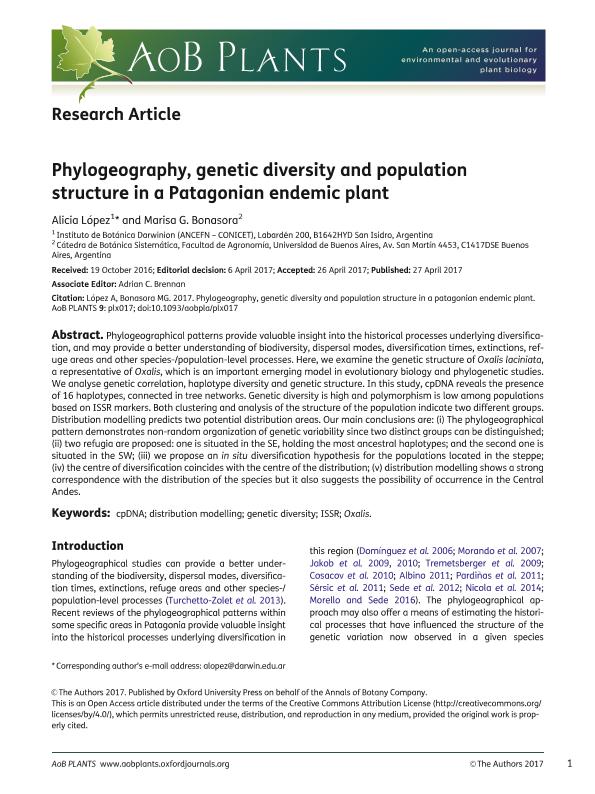Artículo
Phylogeography, genetic diversity and population structure in a Patagonian endemic plant
Fecha de publicación:
05/2017
Editorial:
Oxford University Press
Revista:
AoB Plants
e-ISSN:
2041-2851
Idioma:
Inglés
Tipo de recurso:
Artículo publicado
Clasificación temática:
Resumen
Phylogeographical patterns provide valuable insight into the historical processes underlying diversification, and may provide a better understanding of the biodiversity, dispersal modes, diversification times, extinctions, refuge areas and other species-/population-level processes. In the present study, cpDNA reveals the presence of 16 haplotypes, connected in tree networks. Genetic diversity was high, and polymorphism was low among populations based on ISSR markers. Both, clustering and analysis of the structure of the population indicate two different groups. Distribution modelling predicts two potential distribution areas. Our main conclusions are: (1) The phylogeographical pattern demonstrated non-random organization of genetic variability since two distinctly groups can be distinguished; (2) two refugia are proposed: one situated in the southeast, holding the most ancestral haplotypes; and the second one situated in the southwest; (3) we propose in situ diversification hypothesis for the populations located in the steppe; (4) the centre of diversification is in coincidence with the centre of the distribution; (5)niche modelling shows a strong correspondence with the distribution of the species but also suggest the possibility of occurrence in Central Andes.
Palabras clave:
Cpdna
,
Distribution Modelling
,
Genetic Diversity
,
Issr
,
Oxalis
Archivos asociados
Licencia
Identificadores
Colecciones
Articulos(IBODA)
Articulos de INST.DE BOTANICA DARWINION (I)
Articulos de INST.DE BOTANICA DARWINION (I)
Citación
López, Alicia; Bonasora, Marisa Graciela; Phylogeography, genetic diversity and population structure in a Patagonian endemic plant; Oxford University Press; AoB Plants; 9; 3; 5-2017; 1-12
Compartir
Altmétricas




